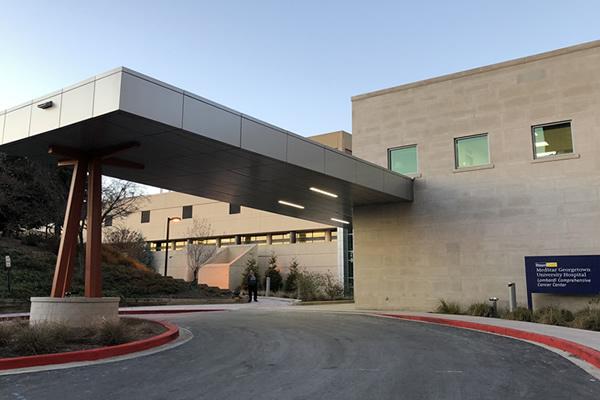The Georgetown University School of Medicine’s Rare Disease Interest Group hosted a virtual panel Feb. 13 to address challenges in equitable rare disease care, including the unmet needs of rare disease patient care and research, in honor of Rare Disease Day.
While the term “rare disease” might imply an anomaly, these conditions impact millions of individuals around the world. In the United States, an estimated 30 million people live with a rare disease, defined as a condition that impacts under 200,000 Americans.

During the talk, members of the group discussed some of the difficulties faced by those living with these conditions. The event’s three panelists included Debra Regier, director of education for the Rare Disease Institute at Children’s National Hospital, Steven Coffee, a member of the Patient Advisory Council for Quality and Safety at Medstar Georgetown Hospital and Rebecca Call, field medical science associate director of training at French pharmaceutical company Sanofi.
Maiko Sho (MED ’26), the student moderator of the event, described how many patients have to live with a fear of the unknown — especially when there is little research available regarding their rare disease.
“Living life when you know something is wrong with your body but you don’t have an answer and you don’t have a way to cure it is something that’s really heartbreaking and challenging for patients,” Sho said during the panel. “It’s really easy to feel isolated.”
According to Roopjote Atwal (MED ’26), a member of the group, equitable treatment access is one of the biggest concerns for rare disease experts.
“In the context of rare disease, health equity can be further exacerbated by lack of access because of barriers with healthcare or financial barriers or social barriers,” Atwal told The Hoya.
To expand equitable patient care, rare disease experts are developing treatments for these often neglected diseases. The number of medicines and treatments for rare diseases has increased nearly sixty-fold since 1983, but only 5% of the approximately 7,000 rare diseases currently have approved treatments.
Given that nearly 90% of rare diseases are considered life-threatening, and many of them have not been deeply investigated, there is still a pressing need for research and drug advancements.
“The disorders I support are multisystemic, lifelong, complicated, and there’s only a limited amount in the literature,” Call said.
The process of diagnosing these diseases is an additional obstacle that many healthcare professionals are struggling with. In recent years, scientists have utilized genetic screening to detect rare diseases, via “exome” or “genome” sequencing, tools that can identify portions of the DNA causing the disease, but not all rare diseases are genetic and can be identified with such technologies.
“Medicine has not caught up with a lot of the families that I see,” Regier said. “Even in the best case scenario when we’re talking about using exomes and genomes, we’re only getting diagnoses between 25 and 50 percent of the time depending on the technology we’re talking about. That means 50 to 75 percent of the people I see I do not have an answer for.”
Coffee understands firsthand the struggles of diagnosing and treating rare diseases, as his child was misdiagnosed before being correctly diagnosed with a rare metabolic condition called galactosemia. During this experience, Coffee realized the importance of directly involving patients in their own care.
“Patients want to be treated as partners in their care and in shared decision making,” Coffee said. “When you’re dealing with patients as a whole, when you look at patients as partners, then you provide better care.”
Between health equity issues, lack of treatment options and insufficient diagnostic technology, rare disease experts are striving to generate more awareness and research to encourage the next generation of physicians to maintain rare disease as a priority.
“The best way of changing the culture of medicine is that we have to educate the young,” Coffee said. “We educate the young to illuminate issues that are glossed over, which include patient engagement and advocacy and patient voice.”
Medical students in the group hope to continue supporting rare disease education and research after they become medical professionals.
“Our responsibility as providers is to try and work with patients and advocate for them and partner with families to make this experience easier and to help support them while they’re going through this journey, as well as to advance the needs for more disease awareness and research and bringing rare diseases into light within medical education,” Atwal said.








